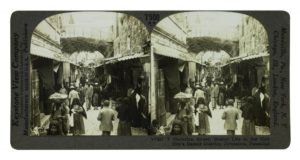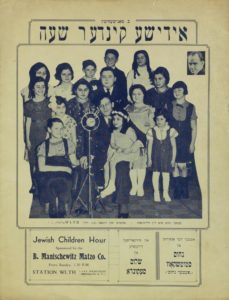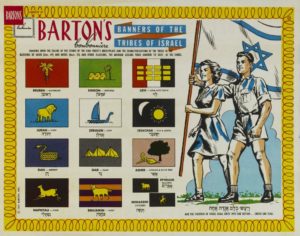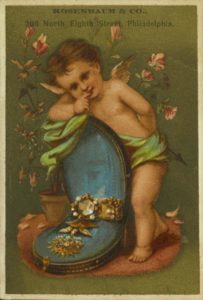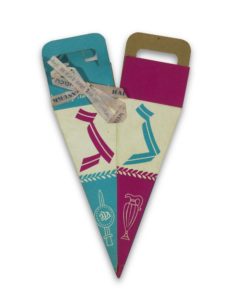30. October 21, 2007 - January 11, 2008
THE MIRIAM “MIMI” GRIMES COLLECTION
JEWISH EPHEMERA: A Journey from the Cairo Genizah to the Twenty-First Century
Mimi Grimes interest in collecting began with the Jewish treasures she grew up with in her parents’ home. The family’s appreciation for fine silver, precious textiles and rare books instilled in her a love for the physical objects of Judaism.
Years later, when she and her late-husband Paul traveled, it was second nature for her to search out examples of Jewish culture in antique shops, flea markets, sidewalk sales and trade shows. The variety of her collection is astounding: rare Russian documents share space with Jewish cookbooks; display buttons, business cards and postcards occupy shelves of bookcases; children’s games, calendars and greeting cards, The Borscht Belt, The Jewish Welfare Board, fine art work and much, much more are represented in abundance. Surely, Mimi Grimes has assembled an important “cultural Genizah” of our time that could possibly keep scholars busy for years to come.
EPHEMERA is from a Greek word meaning something that lasts only a very short time. When applied to collectibles, it refers to the minor transient documents of everyday life that were to be used and then discarded. Greeting cards, cigar wrappers, product labels, tickets, calendars, invitations and even paper dolls are classic forms of ephemera.
Genizah, Hebrew for “hiding place,” is a repository for sacred Hebrew books that are no longer usable. Non-religious documents can be kept there as well. One of the greatest Jewish treasures ever found is the Cairo Genizah of the 9th century Ezra Synagogue in Fostat (Old Cairo, Egypt.) More than 200,000 documents, from the 11th to the 13th centuries, deal with the daily life of the Jewish community. The Genizah revealed a wealth of information including: community minutes, rabbinical court records, leases, title-deeds, endowment contracts, debt acknowledgements, marriage contracts (ketubot) and private letters. More than 100 years after scholars, led by Solomon Schechter, first started to research its documents the Genizah is still actively researched, exhibited and written about.

